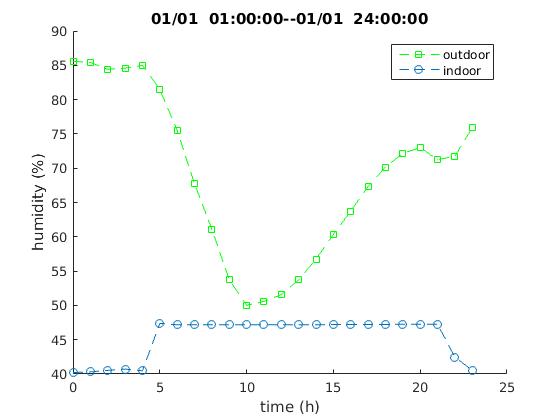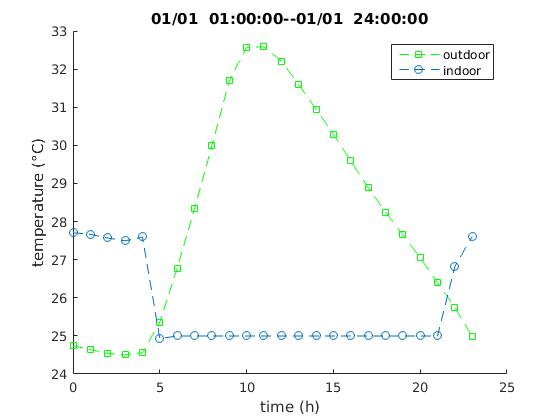Energy Plus modelling HVAC without dehumidification
I'm trying to model a very simple air conditioning device in EnergyPlus, I don't have anything specific about the system yet, apart the fact that it is just a cooling device. I use: HVACTemplate:Zone:IdealLoadsAirSystem the cooling works just fine but when I look at the relative humidity it looks like the humidity stays constantly at 45%.
The climate is very hot and humid, therefore if the air is just cooled the relative humidity should rise, right? I put the Dehumidification Control Type to None so I am wondering why the relative humidity is so low. Perhaps I overlooked something. Can anybody help me with this?
Here are my settings:
HVACTemplate:Zone:IdealLoadsAirSystem,
Thermal Zone 1 !- Zone Name
thermostat, !- Template Thermostat Name
Assembly HVAC, !- System Availability Schedule Name
50, !- Maximum Heating Supply Air Temperature {C}
13, !- Minimum Cooling Supply Air Temperature {C}
0.02, !- Maximum Heating Supply Air Humidity Ratio {kgWater/kgDryAir}
0.0077, !- Minimum Cooling Supply Air Humidity Ratio {kgWater/kgDryAir}
NoLimit, !- Heating Limit
0, !- Maximum Heating Air Flow Rate {m3/s}
0, !- Maximum Sensible Heating Capacity {W}
NoLimit, !- Cooling Limit
, !- Maximum Cooling Air Flow Rate {m3/s}
0, !- Maximum Total Cooling Capacity {W}
Assembly HVAC, !- Heating Availability Schedule Name
Assembly HVAC, !- Cooling Availability Schedule Name
None, !- Dehumidification Control Type
0.7, !- Cooling Sensible Heat Ratio {dimensionless}
60, !- Dehumidification Setpoint {percent}
None, !- Humidification Control Type
30, !- Humidification Setpoint {percent}
None, !- Outdoor Air Method
0.00944, !- Outdoor Air Flow Rate per Person {m3/s}
, !- Outdoor Air Flow Rate per Zone Floor Area {m3/s-m2}
, !- Outdoor Air Flow Rate per Zone {m3/s}
, !- Design Specification Outdoor Air Object Name
None, !- Demand Controlled Ventilation Type
NoEconomizer, !- Outdoor Air Economizer Type
None, !- Heat Recovery Type
0.7, !- Sensible Heat Recovery Effectiveness {dimensionless}
0.65; !- Latent Heat Recovery Effectiveness {dimensionless}






